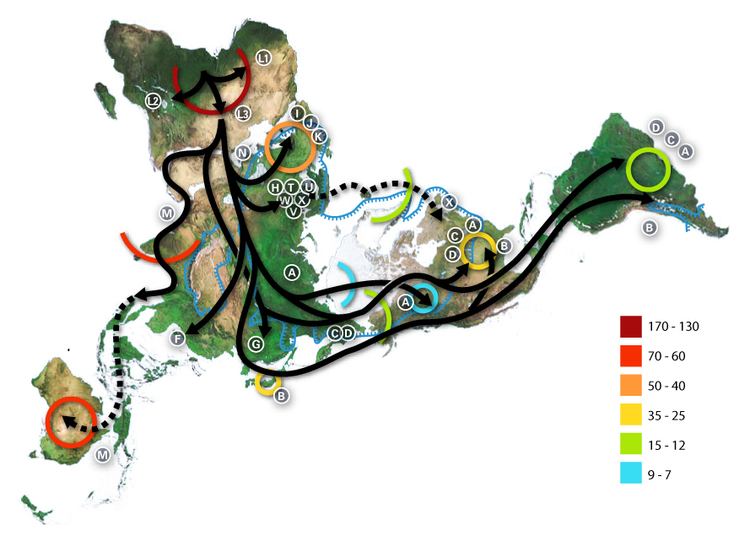Possible time of origin 11,800 to 33,300 YBP Descendants Y1, Y2 | Ancestor N9 | |
 | ||
Defining mutations 8392 10398 14178 14693 16126 16223 16231 | ||
In human mitochondrial genetics, Haplogroup Y is a human mitochondrial DNA (mtDNA) haplogroup.
Contents
Origin
Haplogroup Y is a descendant of haplogroup N9.
Distribution
Haplogroup Y has been found with high frequency in many indigenous populations who live around the Sea of Okhotsk, including approximately 66% of Nivkhs, approximately 38% of Ulchs, approximately 21% of Negidals, and approximately 20% of Ainus. It is also fairly common among indigenous peoples of the Kamchatka Peninsula (Koryaks, Itelmens) and Maritime Southeast Asia.
The distribution of haplogroup Y in populations of the Malay Archipelago contrasts starkly with the absence or extreme rarity of this haplogroup in populations of continental Southeast Asia in a manner reminiscent of haplogroup E. However, the frequency of haplogroup Y fades more smoothly away from its maximum around the Sea of Okhotsk in Northeast Asia, being found in approximately 2% of Koreans and in South Siberian and Central Asian populations with an average frequency of 1%.
Its subclade Y2 has been observed in 40% (176/440) of a large pool of samples from Nias in western Indonesia, ranging from a low of 25% (3/12) among the Zalukhu subpopulation to a high of 52% (11/21) among the Ho subpopulation.
Subclades
Haplogroup Y has been divided into two primary subclades, Y1 and Y2. Y1 predominates in the Northeast Asian range of haplogroup Y, which is centered on the Sea of Okhotsk. Y2 predominates in the Southeast Asian range of haplogroup Y, which is centered on the Philippines and Sumatra.
Tree
This phylogenetic tree of haplogroup Y subclades is based on the paper by Mannis van Oven and Manfred Kayser Updated comprehensive phylogenetic tree of global human mitochondrial DNA variation and subsequent published research.
